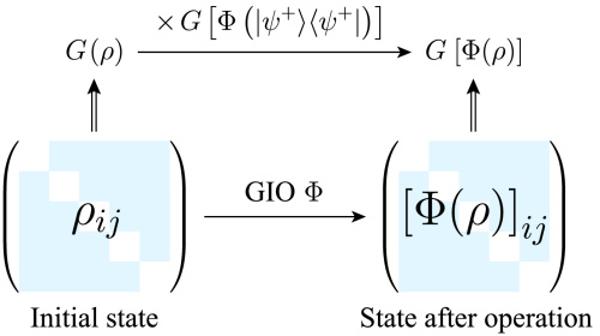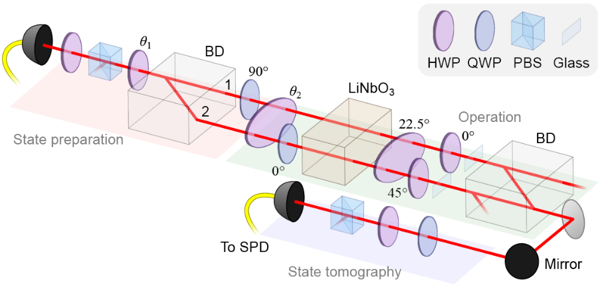Quantum coherence, which originates from the superposition principle, is an important resource in quantum information processing, showing distinct properties from classical physics. There have been many measures for the degree of coherence of the state of a system. The disturbance of environmental noises leads to the loss of coherence, and thus the quantum advantage.
How to effectively characterize the evolution properties of quantum coherence in a noisy channel has become an important scientific question. Inspired by the factorization of quantum entanglement evolving in noisy channels, people have started to discuss whether there exist similar evolution properties theoretically. However, due to the diversity of quantum coherence measures and the noisy channels, relevant experimental investigations are still challenging.
To address this problem, a joint research group led by Prof. Chuan-Feng Li and Jin-Shi Xu at the University of Science and Technology of China in collaboration with Prof. Cheng-Jie Zhang at Ningbo University has proposed and experimentally verified a coherence factorization law of a coherence measure under a type of noisy channels. The relevant research results were published in Photonics Research, Volume 10, No. 9, 2022 (Yi Zheng, Cheng-Jie Zhang, Zheng-Hao Liu, Jian-Wei Shao, Jin-Shi Xu, Chuan-Feng Li, and Guang-Can Guo, Experimental verification of a coherence factorization law for quantum states[J]. Photonics Research, 2022, 10(9): 2172).
Firstly, this work defines a coherence measure for quantum states, namely G-coherence, and proves a coherence factorization law between the initial state and the final state under genuine incoherent operations (GIOs). This coherence measure is related to the off-diagonal elements of the corresponding density matrices of quantum states, so it can be directly obtained from reconstructing the density matrix.
The coherence of an arbitrary quantum state after such a quantum operation equals the product of the coherence of the initial state and a quantity only related to the channel, which is the coherence of the maximally coherent state (whose coherence is unity) after the channel. Fig. 1 is an illustration of the law.

Fig. 1 Illustration of the coherence evolution factorization law of quantum states. The coherence of the state after genuine incoherent operations (GIOs) equals the product of the coherence of the initial state and the coherence of the maximally coherent state after the operations.
We used an all-optical system to prepare initial states of qubits and qutrits respectively, and studied the factorization law of coherence evolution by letting them pass through a GIO. The path degree of freedom of photon is used as the information carrier, and its polarization was employed to realize quantum operations.
As they involve decoherence, we use wave plates to change the polarization of photons in different paths, and use a thick birefringent crystal (lithium niobate) to separate wave packets with horizontal and vertical polarizations, partially destroying the coherence among different paths. The experimental setup for qubits is shown in Fig. 2.

Fig. 2 The experimental setup of the verification of the coherence evolution factorization law for qubits.
We prepared different qubit and qutrit states, and studied the coherence evolution under different channels. The coherence evolution results for qutrit states in the experiment are shown in Fig. 3. It shows the coherence of the state after the channel is close to the product mentioned above, verifying the correctness of the law. We also took a further step to verify the scenario where the initial states are mixed.
This work paves the way for the further researches for the quantum coherence evolution. It will greatly simplify the measurement of the coherence for quantum systems and benefit the design of relevant quantum algorithms for large-scale quantum computation.


